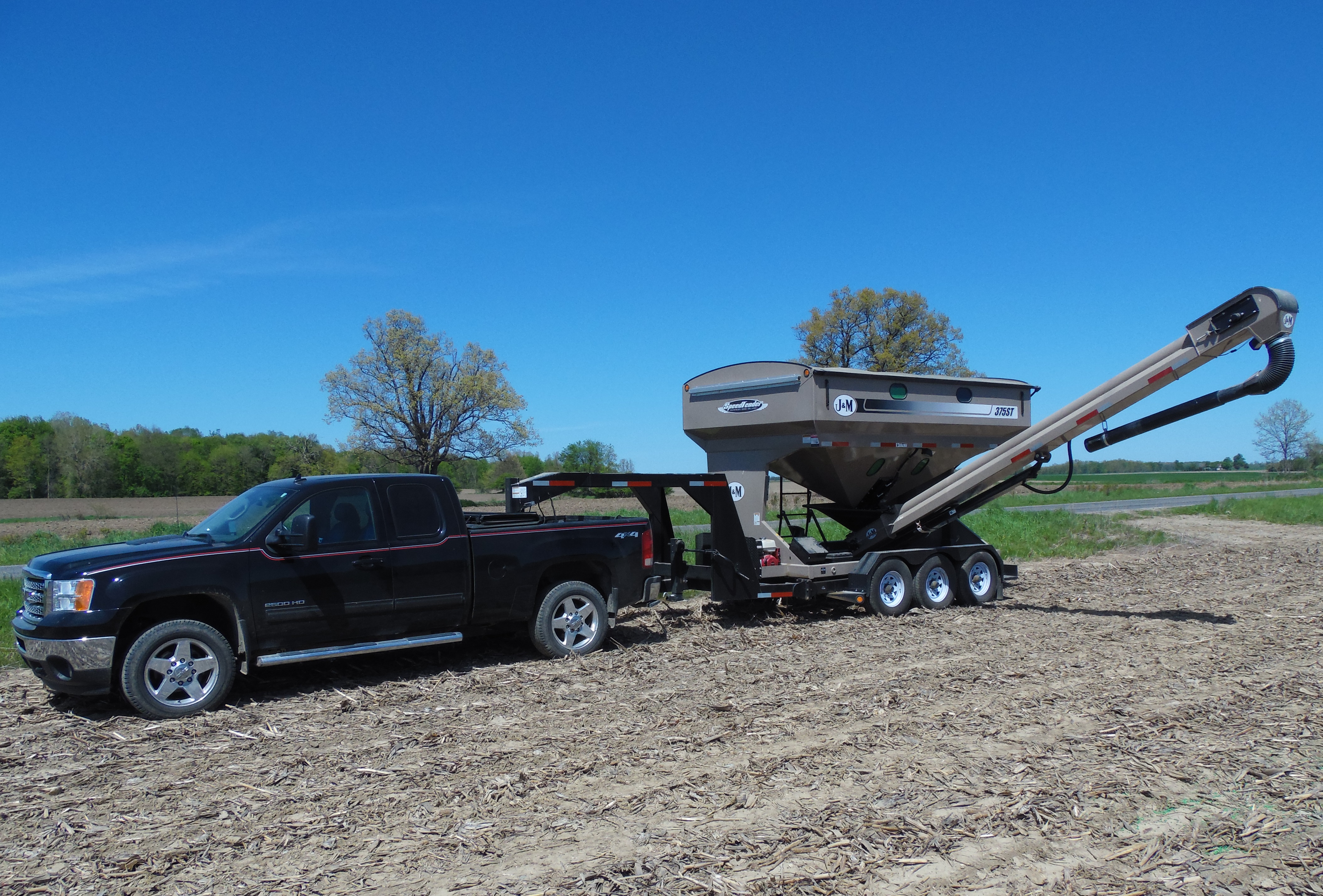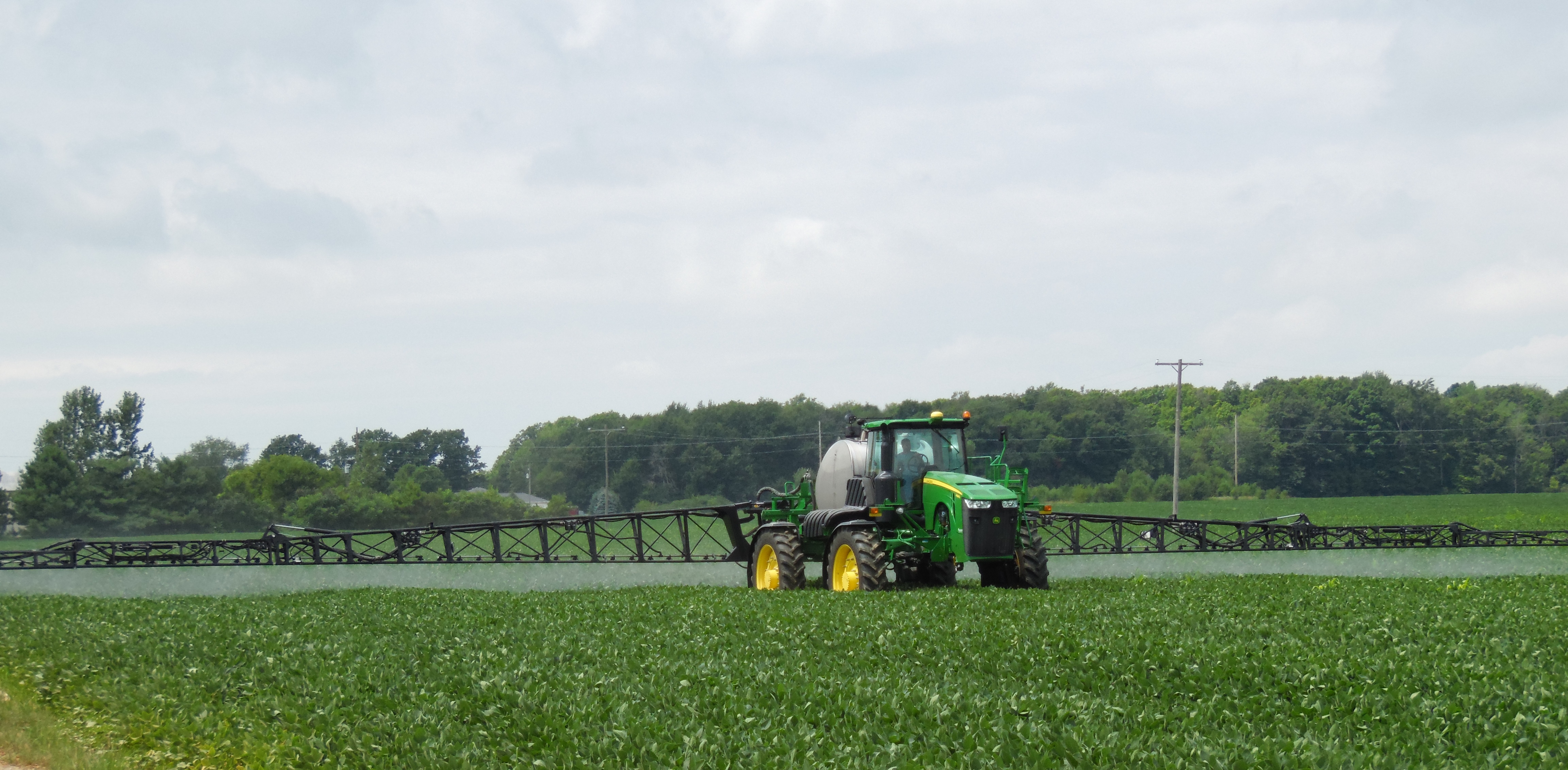Michigan soybean on-farm research trials for 2025
Several different trials are being conducted on farms across the state to address issues soybean farmers ranked as important to their farms.

Every year for the past 15 years, Michigan State University Extension has partnered with Michigan Soybean Committee (MSC) to conduct on-farm soybean research across Michigan to answer important production questions. Trial topics are selected each year based on feedback from farmers who attend winter soybean research update meetings. Trials evaluate a wide range of production practices and products and include treatment timings from pre-plant to flowering. In 2024 alone, 12 trials were conducted on 61 fields with the help of 50 Michigan soybean farmers across all major soybean production regions. The success of the program relies on soybean farmers volunteering to host one or more trials on their farms that are of interest to them.

The projects we plan to conduct in 2025 are listed below. All trials will be replicated at least four times and must be oriented perpendicular to any existing tile lines. Detailed protocols for each project are available and should be obtained from Michigan State University (MSU) Extension soybean educator Eric Anderson (269-359-0565 or eander32@msu.edu), MSU Extension educator Teresa Crook (989-652-3552 or crookter@msu.edu) or MSC research director Mark Seamon (989-245-3100 or mseamon@michigansoybean.org) before conducting the trial.

1. Potassium fertilizer source: This project will determine the yield and income benefits of applying a maintenance/crop removal rate of muriate of potash (potash, 0-0-60) compared with sulfate of potash (SOP, 0-0-50-18S) in the spring on fields having soil test potassium (K) levels in or below the maintenance range. The treatments are:
- A maintenance application of potash as determined by proven yield goals. The fertilizer should be applied in the spring at least two weeks prior to planting if possible.
- A maintenance application of SOP at the same rate and timing as treatment 1.
2. Spring tillage: This project will determine the yield and income benefits of performing one-pass tillage operations compared to no-till. Cooperators choose the tillage implement they want to evaluate. The same planting equipment must be used for all treatments and be equipped and operated to perform in high-residue conditions. The treatments are:
- A single pass of the tillage tool of your choice (vertical tillage tool, high-speed disk, soil finisher, strip tillage, etc.) performed in the spring prior to planting.
- A no-till control.
3. Planting date X maturity group: This project will measure the effect that planting date and maturity group have on soybean yield and income. The treatments will be a combination of the following factors:
- Planting date — In/near the third week of April as weather and soil conditions allow versus three to four weeks later.
- Maturity group — Two varieties that are nearly one full maturity group different with all other traits being as similar as possible. These could be the longest and the shortest maturity groups you plan to plant.
4. Planting rate: This project will compare the effects of four planting rates on soybean yield and income. This trial will be easier to implement if the planting equipment is equipped with hydraulic or electric drives on the seed metering system. The planting rates for this project are:
- 70K seeds/A
- 100K seeds/A
- 130K seeds/A
- 160K seeds/A
5. In-furrow starter fertilizer: This project offers cooperators an opportunity to evaluate the yield and income benefits of their in-furrow starter fertilizer program when planting soybeans. The Sure Crop company has also offered to provide product to cooperators. The treatments are:
- In-furrow starter fertilizer (product and rate chosen by cooperator).
- Non-treated control (no in-furrow starter fertilizer).
6. In-furrow Radiate and Accomplish Max: This project will evaluate the yield and income benefits of two products that have been included in verified high-yield production systems. The treatments are:
- An in-furrow application of 4 ounces per acre of Radiate (plant growth regulator) plus 32 ounces per acre of Accomplish Max (biostimulant), both supplied by Loveland Products.
- Non-treated control (no Radiate or Accomplish Max).
7. Pre-plant sulfur fertilizer: This project will evaluate the impact of sulfur fertilizer applied just prior to planting on soybean yield and income. Choose sites with light-textured soils and low organic matter. The treatments are:
- A broadcast application of 83 pounds per acre granular ammonium sulfate (AMS, 21-0-0-24S) to supply 20 pounds sulfur (S) per acre applied two to three weeks prior to planting, lightly incorporated. For other application options, consult the trial organizer.
- Non-treated control (no sulfur fertilizer).
8. Soybean seed inoculation: This project will evaluate the impact on yield and income from applying rhizobia inoculant to soybean seed. All seed used in the trial must be the same variety and seed lot. The treatments are:
- Seed treated with a base seed treatment with a rhizobia inoculant selected by the cooperator.
- Seed treated with the same base seed treatment used in treatment 1 without the rhizobia inoculant.
9. Residual herbicide: This project will evaluate the effect of a residual herbicide applied preemergence (PRE) or postemergence (POST) on soybean yield and income. This trial is especially beneficial to producers that 1) do not plan to apply a residual herbicide prior to soybean emergence (PRE) or 2) those who will apply a PRE residual herbicide but do not plan to include a residual with their POST herbicide application (layered residual), particularly in fields with late-season flushes of grass and Amaranth (pigweed) species.
When applying the residual PRE, the two treatments include:
-
- Tillage or a burndown PRE application only (products selected and provided by the cooperator).
- Tillage or a burndown PRE application (products selected and provided by the cooperator) with a residual herbicide, Boundary (S-metolachlor plus metribuzin), provided by Syngenta, at 1.2-3.6 pints per acre, depending on soil type, organic matter and tillage practice (see label).
When applying the residual POST, the two treatments include tillage or a burndown application PRE (including a residual herbicide in either case), followed by:
-
- A POST application only (products selected and provided by the cooperator).
- A POST application tank-mixed with a residual herbicide, Dual Magnum (S-metolachlor), provided by Syngenta, prior to R2 growth stage at 1-2 pints per acre, depending on soil type and organic matter (see label).
10. Micronutrient foliar: This project will evaluate the effect of a micronutrient product (2.25% boron, 2.25% zinc, 0.75% magnesium, 1.25% manganese) applied with a postemergence herbicide application. The treatments are:
- A postemergence herbicide selected by the cooperator tank-mixed with Microstrike Bean (provided by Crop Performance) at 1 quart per acre applied between V4 and R1 growth stages. A second optional pass can be tank-mixed with a fungicide/insecticide application at R2-R3.
- The same postemergence herbicide applied in treatment 1 without Microstrike Bean.
11. Cobra herbicide for white mold: This project will evaluate the effect of a single foliar application of Cobra herbicide on soybean yield and income when applied to fields having a history of white mold. The Cobra will be provided by Valent. The treatments are:
- A single foliar application of Cobra herbicide at 6 fluid ounces per acre at or just prior to R1 growth stage.
- Non-treated control.
12. Delaro complete for high yield: This project will evaluate the effect of a single foliar application of a relatively new fungicide from Bayer Crop Science on soybean yield and income when applied in high-yield environments with no expected disease pressure. The fungicide will be provided to the first 10 cooperators. The treatments are:
- A single foliar application of Delaro Complete fungicide at 8 fluid ounces per acre at R3 (beginning pod).
- Non-treated control.
13. White mold fungicide application timing: This project will compare three fungicide application timings to a non-treated control to identify the optimum fungicide application timing and to help validate the new Sporecaster phone app. This trial must be conducted in a field that has had severe and relatively uniform white mold within the past five to seven years. The fungicide (Propulse from Bayer) will be provided. The treatments are:
- Foliar fungicide application of 8 fluid ounces per acre at R1 (one open flower on 50% of the plants).
- Foliar fungicide application seven days after the R1 application.
- Foliar fungicide application 14 days after the R1 application.
- Non-treated control.
Contact Eric Anderson at 269-359-0565 or eander32@msu.edu with any questions or to sign up for a trial. Products with certain trials have limited quantities and are available on a first-come, first-served basis. Research results from past years are summarized in annual reports accessible at the Michigan Soybean Association website.



 Print
Print Email
Email